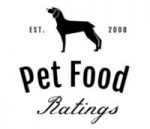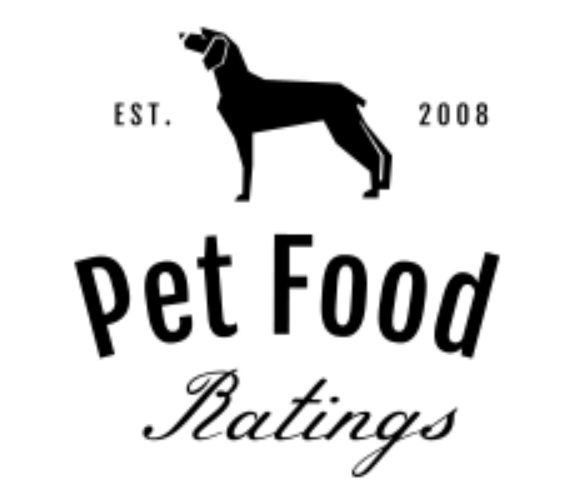Puppy Mills

The cruel side of the dog business
It’s hard to imagine that the adorable, perky puppies in the neighborhood pet shop or on the friendly-looking website are actually the product of a business that keeps canine prisoners, treating them worse than livestock. But almost always, they are—thanks to the growing blight of puppy mills across the country.
Puppy mills 101
By definition, puppy mills are large-scale commercial breeding operations that focus on the business aspect of breeding rather than the quality of the dogs’ lives, forcing the animals to withstand inhumane conditions.
Most of these dogs are kept in rusty or broken wire cages similar to chicken coops, some not even big enough for the dog to move freely. The animals are often left filthy and stacked upon each other, unprotected from the heat or frigid temperatures. Love and affection are unknown to puppy mill dogs, who only receive substandard food and water at best.
“We’ve seen photos of puppy mills with piles of dead puppies and adult female dogs rotting in the sun,” says John Van Zante, public relations manager for the Helen Woodward Animal Center in Rancho Santa Fe, California. “One breeder had the wire cages stacked six high—great if you’re in the top cage, but it really sucks to be in the bottom cage with the five above you pooping and peeing on you.”
“The greatest victims are the breeding dogs,” says Shain. “It’s this life of utter misery. These dogs are treated like agricultural products. In a country where we cherish dogs like members of the family, [it’s shocking] to know that in some places, they’re treated like ears of corn.” These dogs are kept devoid of human contact, used only as breeding machines, forced to produce as many litters as possible before either dying or becoming barren. Sores crop up on their paws, their teeth rot out, disease infiltrates their bodies and their spirits shatter. “They are just robbed of everything that makes a dog a dog,” says Shain.
Most puppy mills are hidden from view on large rural farms; some are in big cities, with dogs housed in basements or garages. Since a vast number of dogs bred in puppy mills are the popular small-breed variety, even an inner-city puppy mill can house a few dozen dogs. The majority of these puppy mills, however, are located in the South and Midwest (Arkansas and Missouri are two of the biggest culprits) and in the rural parts of eastern states such as Pennsylvania and Ohio. There are puppy mills here in California too.
“Here in California, an estimated 500,000 orphaned pets are euthanized each year because they have no homes,” says Van Zante. “That’s an average of 1,370 innocent victims killed every single day, seven days per week—including holidays—all year long. Yet the puppy mills and backyard breeders continue to crank out more pets. Why isn’t that a crime?”
Puppy mills vs. Breeder
Not everyone who breeds dogs operates a puppy mill. Honest breeders can be found everywhere; they focus on the betterment of the breed, not making money. They prioritize the dogs’ overall wellness, taking into consideration breed-specific health concerns before creating a litter. Being “cute” isn’t qualification enough for honest breeders to continue the lineage. Legitimate breeders pinpoint dogs with genetic flaws to make sure that hereditary health issues aren’t passed along to the next generation. The mother and father dogs are well cared for, and more often than not, these dogs are either show dogs or trained specialists in areas such as obedience or therapy. Litters are spaced out, sometimes with a year in between, to give mother dogs a chance to recover. In general, these folks do not have large numbers of dogs in their homes and specialize in only one or two breeds at a time.
Puppies from respectable breeders are cared for as if they were newborn humans, receiving the finest medical care along with plenty of socialization and love. More often than not, the dogs are raised inside the family home, being exposed to household happenings, people and noises. Good breeders will offer health guarantees for the pups, as well as “new puppy parent” support. All of their puppies are properly weaned before being sold to qualified buyers. Many breeders even have new owners sign contracts, making sure the dogs they nurtured into the world will be cared for properly.
On the flip side of the coin are the puppy mills. These groups focus solely on making money, not the advancement of the breed. Genetic problems and proper socialization are not their concerns. The kennel conditions are unsanitary at best, criminal at worst. Water, food and veterinary care are sub par. Most of the breeding stock has never even walked on grass or slept in a warm home, and they’ve never known love or a kind hand. The whelping box (where mothers birth and nurse their young) can often be found not in a cozy kitchen alcove, but in a dirty, dark and urine-soaked barn. The pups are weaned too soon, given no proper socialization and shipped off like books ordered from Amazon.com. Several hundred thousand pups each year are carted across country to be sold in pet stores, or through newspaper ads and websites. It’s a big business, and the higher the demand, the more these puppy mills crank out litters every heat cycle in an attempt to capitalize on profits. “They may say they sell only to qualified buyers, but in reality, that just means anyone with a credit card,” says Shain.
What about pedigrees and papers? Often, that’s all those things are—pieces of paper. “Many of these dogs are registered, even with the AKC,” says Robert Baker, anti-cruelty investigator for the ASPCA. These credentials don’t guarantee puppies’ mental and physical health, and, in many cases, are even faked.
A big price to pay
With conditions so disturbing, it’s not a wonder most of these dogs, both the breeding stock and the puppies they produce, wind up with lasting scars.
Let’s begin with the puppies. They are often weaned too early and sent like cargo to brokers, pet stores or buyers all over the nation. Van Zante asks, “Do you really think a reputable breeder would pull their puppies away from the mother at five weeks of age and put them in the back of a truck and ship them halfway across the country?”
Ideally, pups should stay with their mothers and littermates for 12 weeks, according to the HSUS. With puppy mill dogs, it’s far, far less than that. If you see an eight-week-old pup in the pet store window with a tag that claims he came to California from Missouri, then how long has he been without his birth family? This period of socialization and education for newborn dogs is vital for lifelong skill learning. Dogs separated from their families too early often fail to develop appropriate “social skills,” like bite inhibition and play proficiency. In other words, they have trouble learning how to be dogs.
But this is just the tip of the iceberg. Products of puppy mills suffer a whole host of diseases: skin problems (mites, ticks, fleas, mange), upper respiratory problems (kennel cough, pneumonia), worms and intestinal parasites, viruses like parvo and distemper, hernias, genetic woes (dysplasia, luxating patellas, detached retinas, deafness), and a slew of emotional issues that range from aggression and fear biting to nervousness, shyness and “general weirdo behavior,” says Baker.
And that is if they survive at all. The sick, deformed or weak pups are often left to die. But sometimes, the sick puppies make it to the pet stores or on the plane. Then days or months later, after being loved by their new families, these dogs die of various illnesses, leaving heartbreak and large veterinary bills in their wake. Even if they live, some of these dogs wind up with chronic medical woes that cut their lives short.
Now let’s take a look at the breeding dogs. While their puppies may escape the prison and go on to live pampered, luscious lives, these “mama dogs” are forever chained to filthy cages and lead lives of bleak isolation with little to no human contact. With litters every heat cycle (about twice a year), these malnourished and ill-cared-for dogs are forced to reproduce, nurse and then reproduce again, paying extremely high prices both physically and emotionally. Anyone who has ever had a child herself knows that it takes a healthy mom to grow a healthy fetus. With each litter that passes, the breeding dogs become more and more physically depleted, possibly leading to bearing unhealthy offspring.
When their breeding days are over these dogs are often forced to face an ungracious death. The dogs are often abandoned, left to starve in their cages or dropped off at county shelters to be euthanized. After earning thousands of dollars for the puppy mill owner, they turn over the cost to euthanize to the taxpayers. “To the puppy miller, the parents are just baby-making machines,” says Shain.
A world wide warning
With recent publicity of pet stores such as Pets of Bel Air, a pet boutique in Beverly Hills that was the subject of an expose by the HSUS, making the public more aware about the plights of pet store puppies how can puppy mills not just continue to exist, but thrive, in the 21st century? The Internet.
Technology has given a huge boost to the industry, enabling puppy mills to not only profit, but to expand. “The puppy mills took advantage of people not wanting to buy from pet stores,” says Shain. “They hit these people in their homes through the Internet.” Tech-savvy puppy mill owners use adorable photos and clever wording on attractive websites to entice well-meaning buyers to purchase from their carefully disguised puppy factories. These sites may be similar to informational websites from responsible breeders, but warning bells should go off in your head if a “breeder” allows you to buy a dog over the Internet, sight unseen.
When it comes to purchasing a puppy, use the Internet for information, not credit card transactions. “I think the Internet is good to research breeds of dogs to learn their characteristics and what breed might be best for a person’s lifestyle,” says Baker. “And the Internet can be valuable in locating local breeders and learning what puppies are available,” but not for ordering puppies as easily as you pick up concert tickets from Ticketmaster.com.
According to Baker, some of the most popular websites where puppy mills advertise are pets4you, greefieldpuppies, and lancasterpuppies. He notes, “That doesn’t mean that everyone posting dogs on these sites is a puppy miller, but how does a consumer distinguish where the dogs come from?”
It’s nearly impossible to tell, by looking at those photo-filled websites, who’s the fraud and who’s the friend. Other websites pretend to be local breeders, all the while purchasing dogs from puppy mills and reselling them to naïve consumers. Although the individual websites may seem legitimate or leave you with a good feeling, remember that making a website after a bit of training, or hiring someone to create it for you, is a snap. “There is absolutely no reason to believe what you see on that website is true,” says Shain. “These people have gotten savvy in marketing their puppies.”
The wording on these sites, such as “hand-raised” and “family-raised,” may seem to convey compassion and love, but it’s merely a marketing ploy to lure in unsuspecting consumers. In fact, those words are often red flags to puppy mill investigators. Even contacting the “breeder” and receiving emails packed with adorable puppy photos doesn’t guarantee you’re not dealing with a puppy mill.
The only way to make sure you’re dealing with a reputable breeder is go and look for yourself. “It’s too important to let it go by,” Shain says. “There are too many things going on that you can’t see [if you don’t go in person].”
Ordering your dog online, even if the “breeder” offers to send you complete lineage with photos and carry the dog on an airplane to meet you at the airport, is a huge mistake. You have no way of ensuring you are not buying a dog that was birthed in a rabbit cage to a mother suffering from mange and tick infestation. And even if you end up receiving a relatively healthy dog out of the transaction, the puppy’s parents still suffer. “This purchase goes well beyond the individual animal,” says Shain. “The money has gone to keep [the puppy’s] mom or dad in a cage for years.”
What can be done?
If puppy mills are so heinous, then how do they continue to exist? Unfortunately, it’s nearly impossible to monitor the accuracy of what is said on each and every website, meaning that the majority of Internet puppy mills will continue business as usual, without getting busted. And when it comes to puppy mills in general, federal investigators are overburdened, local animal control officers may not have proper jurisdiction, and breeding operations are regulated differently than individual pet owners, according to the HSUS.
Fortunately, the HSUS and other groups are working to change all of this. Thanks to the voices being raised in opposition to these inhumane practices, legislators have begun to create new regulations on puppy mills. But it’s still not enough. At the end of the day, it’s up to the potential dog owner to keep these puppy mills from expanding. “There’s a ready supply of people [who want to own dogs],” says Shain.
If you’re looking for a new dog, don’t think you’re “rescuing” one by buying it from a website or a pet store; you’re only fueling the fire and underscoring the ability of puppy mills to stay in business. “It doesn’t matter what their reasons are [for buying from the Internet or pet store],” says Shain. “They’re still handing over their money. The money doesn’t care why [they] bought from puppy mills.”
Oftentimes, a customer at a pet store has no way of confirming that the puppy came from humane conditions, even if employees swear they don’t ever receive their inventory from puppy mills. Van Zante says that every time he’s investigated this claim, “their puppies were from puppy mills.” It’s estimated that a majority of puppy mill puppies wind up in pet stores so it would be difficult to determine which ones are not. With hundreds of reputable breeders out there, you have other options than going to a pet store.
Also, to avoid buying directly from a puppy mill, don’t patronize long-distance newspaper ads, classifieds or the Internet. Again, the best and only way to avoid falling prey to a puppy mill is go to the breeder in person. You must see the facility with your own eyes, and then trust your instincts. “This puppy, for all practical purposes, is going to be a member of your family for the next 10 to 15 years, and it is imperative that [you] exert the effort to ensure [you] are purchasing a healthy and well socialized animal,” says Baker. “And more importantly, that [you] are not financially contributing to a puppy mill.”
Don’t fall victim to the hard sell; there are lots of good breeders out there who are selling your breed of choice. Take your time, investigate, trust your gut and ask many questions. You need to see where the dogs were born, the parents, the conditions of the property and the way the people interact with the pups. If, when you arrive, the facility has stacked cages, dozens of dogs, inadequate shelter or inferior cleanliness, then leave. Everything about the place must be reminiscent of how you would treat your dog. Avoid breeders who offer to bring the dogs out to your house, the Wal-Mart parking lot or even your car in the driveway. “Responsible breeders are proud to show off their kennels,” says Baker. “If they have nothing to hide, they should show you everything,” echoes Shain.
It’s like that pebble-in-the-pond cliché: one small action has a ripple affect. Don’t be afraid to investigate before purchasing a puppy. In the end, you will be helping to put an end to the suffering caused by puppy mills.
Make a difference
- Try adoption, and also encourage your friends and family to save a life by adopting their next pet. Check out www.petfinder.com or your local animal shelter website.
- Tell those who want to buy a dog to find a responsible, local breeder. To find detailed steps for purchasing a puppy, visit HSUS Where to get a puppy.
- Be sure to investigate breeders or visit shelters and rescues, and offer to go with your friends if they’re the ones who are looking for a pet.
- Only use the Internet to search for information about a breeder not to buy a dog.
- Write, email or call legislators to voice opposition to puppy mills, and ask for better laws and better enforcement of current laws.
- Share the facts about puppy mills with everyone you know. To order a $3 Dog Savers Kit to help spread the word in your community about puppy mills, visit HSUS Stopping puppy mills.
- Donate to groups that fight puppy mills.
For more information on puppy mills:
https://www.lcanimal.org/







